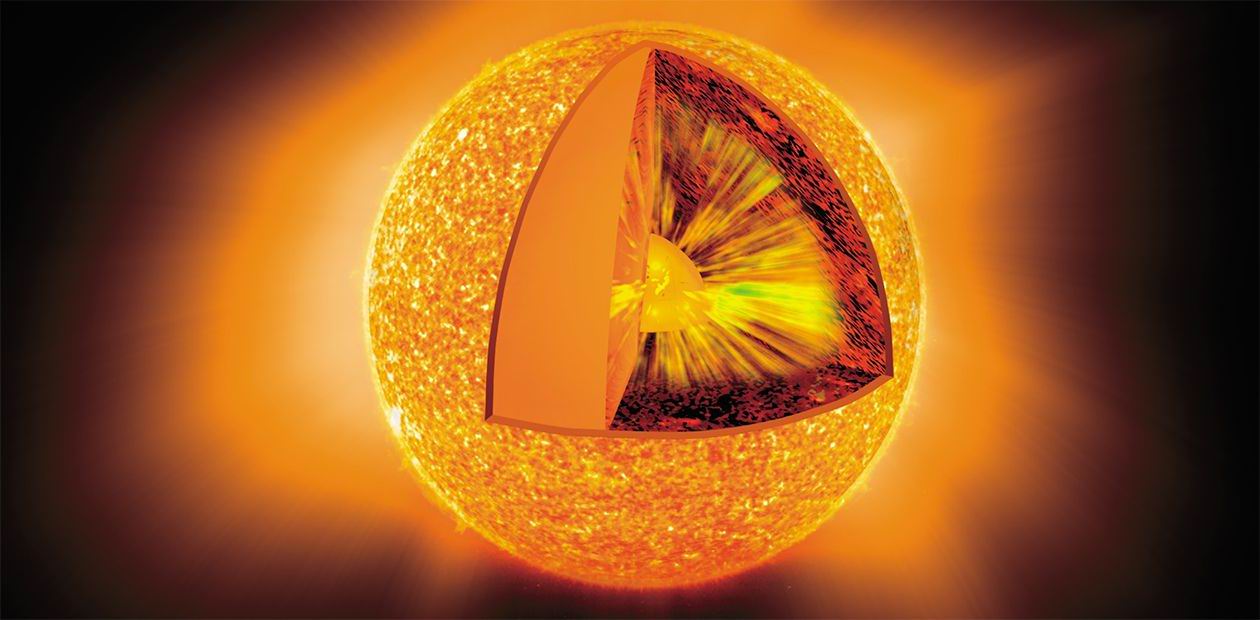Waves in the Solar Coronal Holes
A group of scientists from the Institute of Solar-Terrestrial Physics SB RAS (Irkutsk) have revealed propagating plasma waves at the base of solar coronal holes. Several Russian scientific teams along with their colleagues from abroad have joined their efforts to show that photospheric waves penetrate the solar corona because of the waves’ parametric resonance with the oscillation modes of corona’s magnetic structures. The result was recognized as the most important in 2008 in the Sun section of the RAS Astronomic Council.
Heating of the solar corona, the most outer cover of our lamp of the day, is a long-standing problem of astrophysics. The same can be said about the majority of star atmospheres. It has been firmly established that the Sun’s surface visible to the eye (photosphere) has the temperature of about 5,800 K, while the upper chromosphere (the layer situated 2,000 to 3,000 km higher) is heated to 20,000 K, and the temperature of some areas of the corona reaches 4,000,000 degrees. How does the relatively “cool” photosphere heat the upper layers of the solar atmosphere? The second law of thermodynamics rules out the possibility of direct heat transfer from the photosphere to the hotter corona, which means that the energy must be transported in a different way.
At present, two possible mechanisms are considered that claim to be energy “suppliers” to the corona. They can act both independently and together. The first one is the magnetic fields that penetrate the solar atmosphere to great heights and are able to accumulate and release significant energy. The second one is plasma waves generated by convective motions in sub-photospheric layers and other dynamic processes. Depending on the prevailing restoring force (the force that seeks to restore plasma equilibrium), the waves can be acoustic (waves of elasticity), gravity, or magnetic. Often these forces act simultaneously, and then we deal with the real centaur-waves: magnetoacoustic, acoustic-gravity, etc.
To study the oscillatory-wave processes on the Sun, we need large solar telescopes equipped with high-sensitive spectropolarimeters. According to the Doppler effect, the motions of radiative plasma bunches from an observer and to the observer respectively increase or decrease the length of the spectral line wave, shifting it from the initial position (the higher the speed, the greater the shift). The equipment available at the Institute of Solar-Terrestrial Physics in Irkutsk is able to register variations constituting less than one ten-millionth of the radiation wave’s length. Making synchronous measurements on several specially chosen spectral lines it is possible to obtain high-altitudinal cuts of Doppler velocity within the range of photosphere-chromosphere heights (which are about 2,000 km) for the solar atmosphere objects featuring various configuration of magnetic field. The largest and most interesting among these objects are the coronal holes (CH).
The coronal holes owe their name to the fact that in X-ray and extreme ultraviolet ranges they look like dark depressions in the bright corona. Astronomers connect them to the large-scale magnetic structures with an open configuration of magnetic field, i.e., the one when magnetic field lines in the photosphere are perpendicular to the surface and preserve this direction when exiting into the inner corona. By the way, the solar wind – a flow of charged particles from the Sun – which plays such an important role for the Earth, comes out of the CHs.
To study certain oscillation modes in detail, we used the frequency filtering methods, which allowed us to single out the components we were interested in from the noise-type mixture of quasi-stationary motions and various oscillations, and then to restore their initial spatial-temporal distribution with the help of reverse transformation. This operation has turned out to be especially useful for revealing propagating waves. We have discovered and recorded convincing manifestations of waves propagating upward in the immediate base of the coronal holes.
The presence of wave motions of this kind is indicated by the repetitive inclined stripes on the spatial-temporal diagrams of Doppler velocity. Distances between the stripes along the time axis correspond to the period of oscillations, and the angle between a stripe and the time axis is related to the horizontal projection of propagation velocity (the bigger the angle, the higher the velocity). The propagation velocity of a wave from the photosphere into the chromosphere was determined by the average time lag of Doppler velocity signals. As a result, we learned that dominating were the waves with a 5-minute period (fundamental photospheric mode), although we often observed oscillations with a 10- to 15-minute period. The measured phase velocity made up 40—45 km/s for equatorial CH and 70—80 km/s for polar CH.
Joint efforts of several scientific teams from the Institute of Applied Physics RAS, Institute of Solar-Terrestrial Physics SB RAS, Central (Pulkovo) Astronomic Observatory RAS, Nizhniy Novgorod State University, and Helsinki University of Technology, which involved radio data, have showed that penetration of photospheric waves into the Sun’s corona is possible as a result of parametric resonance of these waves with the oscillating modes of the corona’s magnetic structures. Though, as it often happens, we have ended up in having more new questions than answers to the questions asked earlier.
In the future, we should learn what part of energy of plasma waves is spent on the heating of the corona, and what part is taken away with the solar wind. In this case, coronal holes might play the role of an energetic valve that regulates the degree of corona heating. We believe that the joint grant of the Russian Foundation for Basic Research and Royal Astronomical Society of Great Britain received in 2008 will help to move further in the solution of this problem thanks to the joint efforts of Russian experimenters and British theorists.





